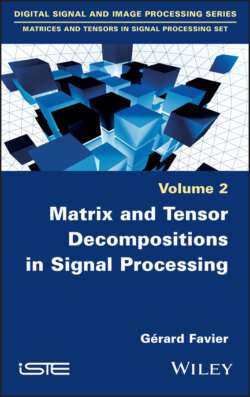Читать книгу Matrix and Tensor Decompositions in Signal Processing - Gérard Favier - Страница 10
Introduction
ОглавлениеThe first book of this series was dedicated to introducing matrices and tensors (of order greater than two) from the perspective of their algebraic structure, presenting their similarities, differences and connections with representations of linear, bilinear and multilinear mappings. This second volume will now study tensor operations and decompositions in greater depth.
In this introduction, we will motivate the use of tensors by answering five questions that prospective users might and should ask:
– What are the advantages of tensor approaches?
– For what uses?
– In what fields of application?
– With what tensor decompositions?
– With what cost functions and optimization algorithms?
Although our answers are necessarily incomplete, our aim is to:
– present the advantages of tensor approaches over matrix approaches;
– show a few examples of how tensor tools can be used;
– give an overview of the extensive diversity of problems that can be solved using tensors, including a few example applications;
– introduce the three most widely used tensor decompositions, presenting some of their properties and comparing their parametric complexity;
– state a few problems based on tensor models in terms of the cost functions to be optimized;
– describe various types of tensor-based processing, with a brief glimpse of the optimization methods that can be used.
